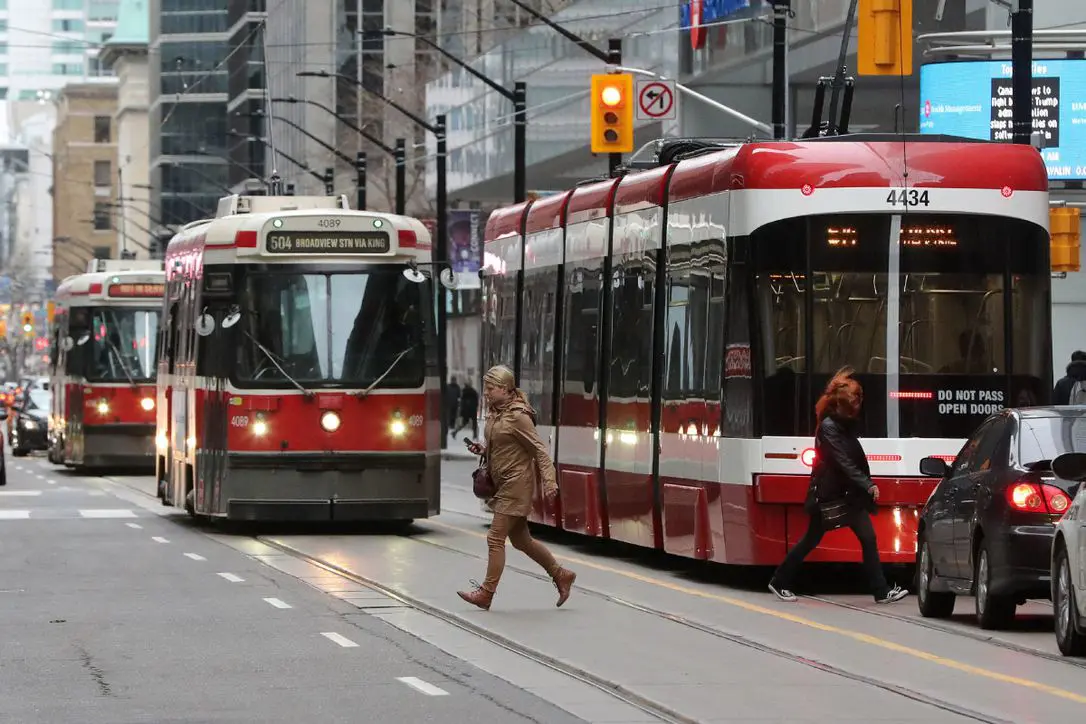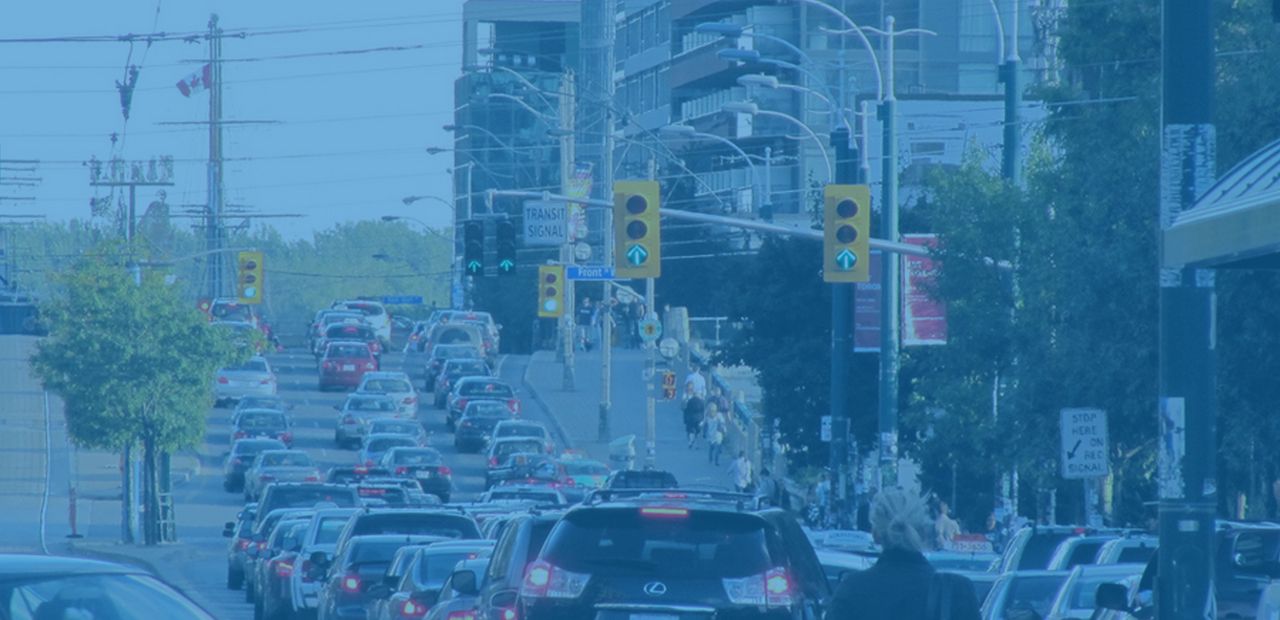Mobilizing for transportation workers: First steps towards a more just vehicle-for-hire industry in Toronto
by Thorben Wieditz, Director of Metstrat
Digital platforms are reshaping how we work, live, and get around. The rise of the gig economy presents a myriad of challenges to workers around the world, as platforms like Uber or Lyft spend hundreds of millions of dollars to remake labour laws that enshrine its business model into law. Just this week, news emerged of Uber budgeting $30 million in California to be spent on causes and political candidates in 2024. As the City of Toronto begins work on more robust regulations governing the vehicle-for-hire industry which is due in the Fall of this year, Uber has already leaned heavily on City Council in the form of legal threats, prompting Council to suspend, at least temporarily, its moratorium on vehicle-for-hire license that was passed to curb emissions and alleviate driver poverty.
The level of political influence that money can buy cannot be underestimated and reminds us of the #UberFiles, the revelations contained in over 124,000 documents leaked to the Guardian in 2022 that outline how the company used questionable tactics, deceit and “kill switches” to install its business in countries as diverse as France, Germany, the US, and … yes, Canada, as outlined in the Toronto Star.
In Ontario, Uber has already lobbied our conservative provincial government to pass Bill 88, the “Working for Workers Act” [sic]. That Act allows Uber to pay workers for “engaged time” only, which sets up future app-mediated employment as a new form of digital piecework. In Toronto, where there is an immense oversupply of drivers, workers spend 52% of their time driving empty while on the call or enroute, meaning they must work two hours to get paid for one, and the company gets two hours of labour time for the price of one. Cities are thus placed in the position to either shoulder the burden of tens of thousands of ultra-precarious workers or to mitigate the impact of weak provincial labour laws for gig workers.
Mobilizing Justice
What sometimes gets overlooked in mobility studies is the justice dimension as it relates to the supply side of our transportation systems. What are the working conditions like for those who are producing electric buses? What are the working conditions for Uber drivers who safely pick us up and drop us off or food delivery workers who bring us our food? Toronto’s RideFair project starts from the position that by improving working conditions for drivers, we can also achieve several major City policy goals related to traffic and emission reduction and transit use.
To be clear, Toronto City Council has no jurisdiction over labour conditions, yet regulations or the lack thereof, often have a tremendous impact on workers’ lives. In Toronto, the fact that the Council handed control over licensing to platforms like Uber in 2016 means that the company can have a seemingly endless pool of drivers and a reserve army of labour. As a result, too many drivers compete for too little business, but the company profits from the situation as it allows for convenient customer service and quick pick-up times. Yet this problem also touches areas the City has jurisdiction over, such as transit, emissions, and congestion. Optimizing, not maximizing the number of vehicle-for-hire cars on the road is a simple way of addressing a cascade of issues, and as a bonus, it will allow drivers to earn more by spending their time transporting passengers rather than circulating empty.
Quick pick-up times and readily available Uber service has come at a cost: at a cost for drivers, at a cost for our environment, at a cost of added congestion, and at a cost to our public transit system.[1] Importantly, all these costs are externalized by the company and shouldered by their drivers and the broader public as laid out more in this recent article in Spacing.
Pre-Uber transportation studies have estimated that one taxi for every 500 residents would be adequate for Toronto’s taxi fleet. The idea was that taxis provide a service that supplements existing transit options, walking and biking. Fast forward to 2019, according to the City’s Director of Municipal Licensing & Standards, Toronto had 120,000 licensed vehicle-for hire drivers or one possible vehicle-for-hire for every 20 residents. This number is higher than the 90,000 licensed vehicle-for-hire drivers in NYC, a place with a population three times that of Toronto. Platforms like Uber benefit from overstaffing: it allows them to reduce pickup times, contributing to customer convenience and market dominance. But it’s affordable to the company only because in Toronto, like in many markets, they don’t need to pay drivers when there is no customer in the car – that is to say, less than half of the time worked.
What makes this situation worse is the realization that the median pay for Uber drivers, according to the company, is $33.35/hr of “engaged time.” Since drivers spend 52% of their time “unengaged,” the median immediately is reduced to $16.01/hr before considering costs like car payments, gas, insurance, wear and tear, and taxes. Applying these costs reduces the median income of Uber drivers in Toronto to less than $8/hr. That means half of the time hourly earnings are even less than that. This explains why over 2,000 drivers in Toronto were cancelling their licenses each month in 2022 and why it is preposterous of a company like Uber – who owns no fleet – to claim that they will transition to zero-emission vehicles by 2030 unless the company pays its drivers a wage that allows them to transition their vehicles into costly EVs.
To ensure that Uber doesn’t have to pay its drivers for their entire day at work, the company lobbies our provincial governments to “reform” labour law in ways that systematically exclude gig workers from rights that any other worker in Canada enjoys under the Employment Standards Act. The fact that most Uber drivers and gig workers are newcomers and members of racialized communities makes this a form of systemic racism, by which some of Canada’s most vulnerable workers are exposed to second-class labour protections. When we think about mobility systems, Uber’s inefficient use of labour has a cascading effect: driving empty while waiting for a customer (deadheading) needlessly increases vehicle-kilometres travelled, increases the use of fuel, and adds to already stifling congestion. To make things worse, research has shown that about one third of Toronto’s Uber rides directly replace public transit trips. Our own study found that Uber and Lyft replaced about 31 million transit trips with rides in private automobiles in 2019 alone, removing an estimated $74 million of fares from the TTC’s budget.
What does mobilizing justice mean, given this context?
It means that we need to convene the transportation community, urban planners, transit advocates, environmentalists, academics, Uber drivers, labour organizations and the public to work together and mobilize each other’s resources, members, knowledge, and experiences to ensure our decision makers will address the above-mentioned externalities related to Uber’s inefficient business model. In short, City Hall, not Uber or Lyft, needs to decide how many vehicles-for-hire should optimally be licensed to restore public control over this sector, a call that enjoys much support among existing Uber drivers. Collectively, we can make this happen by participating in the City’s policy process
Regulating Uber in the public interest has wide-ranging positive impacts on Toronto, and optimizing the number of Uber cars lies at the heart of it.
Disclaimer: the research described in this piece was not funded by or conducted as part of Mobilizing Justice. The views and opinions expressed here are those of the authors and do not necessarily reflect the views or positions of Mobilizing Justice.
[1] Given limited road space, particularly in areas of the downtown impacted by construction, there may be limits to how much customer wait times can be improved by adding additional drivers in the context of dense congestion
You may also like
 The Different Price Tags of Access: Transit, Housing Affordability and Demographics
The Different Price Tags of Access: Transit, Housing Affordability and Demographics
Introduction Building a new transit system? Great for commuters. Even better for housing prices. When cities build transit, nearby land and housing prices often shoot… Read More
 Developing Standards for Equity in Transportation Planning and Policy
Developing Standards for Equity in Transportation Planning and Policy
program at McMaster University. I began my PhD in September 2023 and have been part of the PhD MJ Researchers team since then. In a… Read More
 Making Space for Grief: Innovate Approaches to Knowledge Mobilization Through Art, Placemaking, and Cross-Sector Dialogue
Making Space for Grief: Innovate Approaches to Knowledge Mobilization Through Art, Placemaking, and Cross-Sector Dialogue
Grief—often defined as the process of coping with loss—ebbs and flows throughout our lives. Despite its universality, this deeply human experience is often constrained by… Read More
